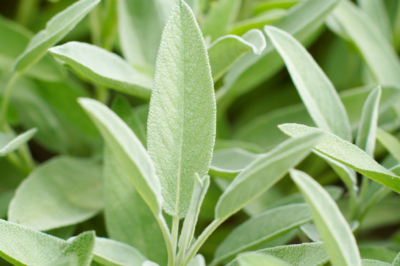For sage to thrive magnificently in your garden, the plant requires careful care. Dive here into the crucial basics around balanced water and nutrient levels, proper pruning and overwintering.

Contents
How to water sage properly?
As a typical plant of the Mediterranean climate, sage is well adapted to dry weather conditions. Well-established specimens are consequently content with the natural rainfall. In the juvenile stage, on the other hand, the water requirement proves to be relatively high. The following tips provide more detailed information:
- Water young plants regularly during dry periods
- water additionally after each cut
- let the soil dry well between waterings
- The water requirement of a potted plant is higher than that of a bedding plant.
Does the plant need fertilizer?
True sage extracts nutrients from the soil at a medium level. Therefore, fertilize the herb plant from May to August every 2 weeks with compost and horn shavings.(49,00 at Amazon*) If you care for the sabi herb in a tub, it is advisable to give organic liquid fertilizer.
When and how to cut sage?
To care for the evergreen half-shrub fully, the right cut proves to be the linchpin. To prevent the shoots with the aromatic foliage from becoming woody, you should take the following tips to heart:
- regularly prune the plant from the beginning
- prune a few additional shoots with each harvest
- do not cut into the woody part of the plant
- cut off the buds before flowering in June
- alternatively, allow sage to bloom and cut afterwards
- do not cut or harvest the plant after mid-August
The main pruning you do in early spring, when it is no longer freezing. Remove the withered foliage and shorten the branches to 15 centimeters.
How to manage the wintering?
In order for you to care for sage for several years, the plant should survive the winter undamaged. True sage can tolerate temperatures as low as -10 degrees, while tropical species are not hardy. Do it right with the following tips:
before the first frost, cover the plant with leaves, straw, brushwood or jute
cover a pot with bubble wrap and place it in front of the south wall
alternatively, overwinter indoors in a bright place at 5-10 degrees Celsius
water from time to time so that the root ball does not dry out completely.
Thus, in a mild winter, the chances are good for a continuous harvest, since it is an evergreen plant.
What diseases and pests are threatening?
If you care for sage properly, there are rarely any diseases or pests to worry about. If health problems do occur, the usual suspects are behind it, such as powdery mildew, verticillium and aphids.
Tips & Tricks
Use sage as a bed border that is as decorative as it is effective. As has been discovered through dedicated observation, the scent of sage effectively repels voracious slugs, caterpillars and other critters.









